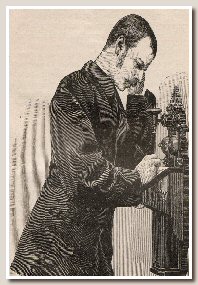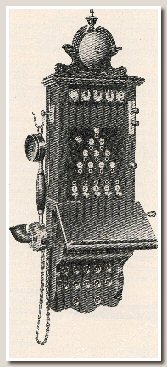Öller & Co.
Öller was the son of a pharmacist and had previously been employed as an office worker and ledger clerk, but had also set up and operated a smaller silk factory in Stockholm. Neither the factory nor the subsequent activity of growing mulberry trees for silk worms seem to have amounted to any particularly successful business operation.
Together with some fiends, Öller started to experiment with an electrical telegraph in the beginning of the 1850s, and in 1853 he participated in building the first electrical telegraphy line between Stockholm and Uppsala.
Subsequently, Öller held several other positions within the fledgling Telegrafverket and continued in his spare time trying to improve the equipment following his own ideas.
It is in this context that Öller starts his workshop in order to be able to work to an even greater extent with the technological and mechanical development. At the same time, he was for a long period on Telegrafverket’s payroll, and also received direct government grants in order to allow for the workshop to survive.
Öller’s employers and friends managed to persuade the government at the time to regard the workshop as something of a national necessity that had to be promoted.

In 1875, when the business had reached its peak, Öller had 58 employees, among them several who would become important personalities in the development of the Swedish industry.
The more detailed circumstances surrounding Öller’s telephone manufacturing are not known, but is clear that he was rather early, probably already in the late autumn 1877 or early 1878.
There is no evidence to suggest that Öller continued with any additional or more developed telephone models and it is not clear how many magnet telephones the firm manufactured in total. A qualified guess suggests that the production did not exceed the approx. 400 magnet telephones manufactured by Ericsson in the same period. Henrik Öller seems to have understood that younger and more business minded competitors soon would take the game home and already in 1886 he began winding up the business, but a certain part of the business remained for a year following his death 1889.
With hindsight, it might be possible to conclude that Öller was more of an enthusiast and pioneer than businessman. He did establish an industrial branch, but others were meant to celebrate its triumphs and the person who should have been able to snatch the leadership was another headstrong inventor in Jönköping.
